"Pulling the wire" is not a boring monotonous activity, as is commonly believed in everyday life, but the art of embroidery with gold and silver, which has come from the depths of centuries. Embroidery with wire, or "gold embroidery", has been known in Russia since the 16th century and today its popularity is reviving again.
What is this?
Wire is a thin silver or gold thread twisted into a tight spiral and used for three-dimensional embroidery that imitates metallic patterns.
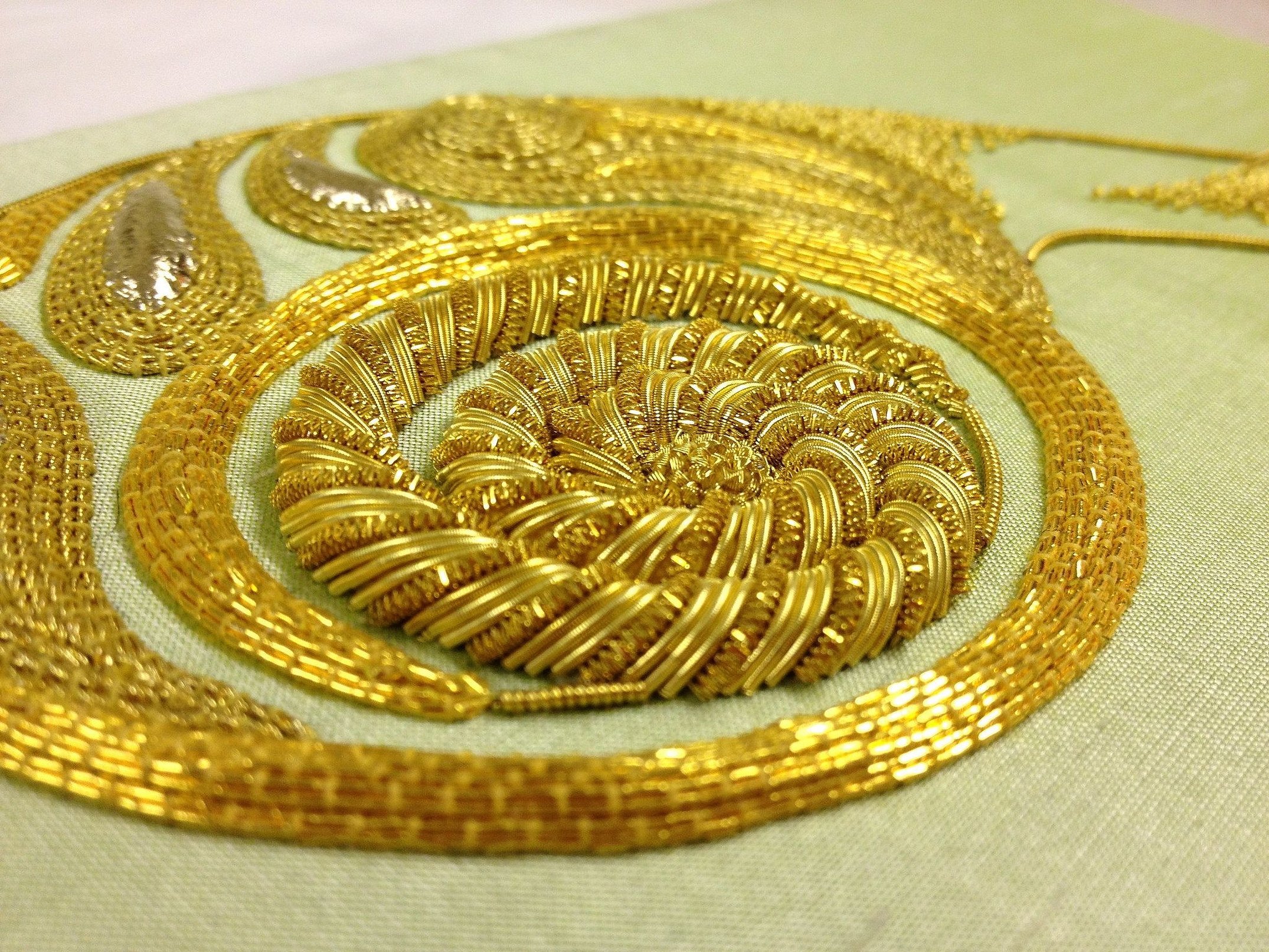
The word, which has Spanish roots, found its way into French as the word "cannetille", literally meaning "pipe" or "cane". Later, it was assigned to a type of decorative and applied art in the form of embroidery using metal tubes.
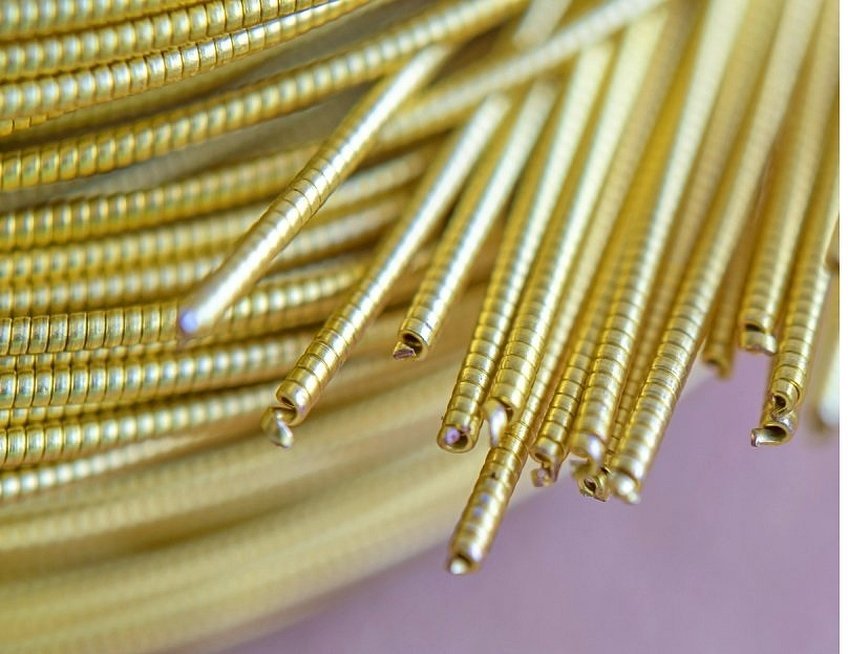
Initially, the process of producing wire was very complex. Craftsmen had to create a very thin wire from a piece of metal. To do this, they used special drawing boards through which they pulled hot wire until they got the thinnest metal thread. This thread was twisted into a tight spiral, manually winding it onto a rod.
This process took several days. This is where the popular expression "drag out the rigmarole" comes from, that is, to do a tedious, boring task for a long time.
Modern gold embroidery
Today, gold embroidery, or as they used to say in Rus', "gold embroidery", is represented in many types of decorative and applied arts. It is used to create paintings, accessories, decorate clothes and interior items. In theater workshops and studios, you can find craftswomen who masterfully decorate stage costumes with gold thread. In monasteries, novices decorate accessories for ceremonies and clothes for ceremonial services.
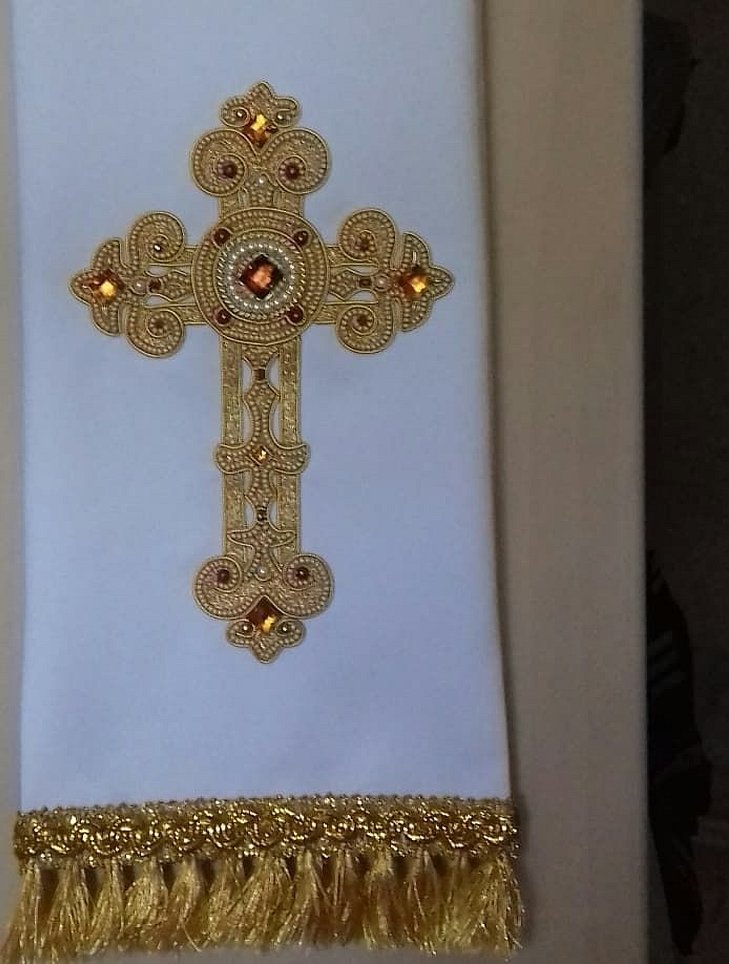
The materials for gold embroidery are now not precious fragile metal threads, but factory-made gilded, silver-plated, colored wire and metallized threads of various types. Wire for embroidery, in combination with silk satin stitch, beads and pearls, is not inferior in luxury to its historical analogues, and the skill of modern gold embroiderers borders on art.

Metallic threads in modern embroidery
The modern range of metal threads is quite wide and will satisfy the needs of any needlewoman. The wire used in manufacturing has different characteristics that are reflected in the decorative properties of the wire.
Tough rigmarole
It is made by winding a round wire onto a cylindrical form. A rigid spiral is formed that retains its shape well. The main purpose of rigid wire is to design the contours of the pattern, highlighting the main elements of the pattern. A master class on wire embroidery is presented further in the article.
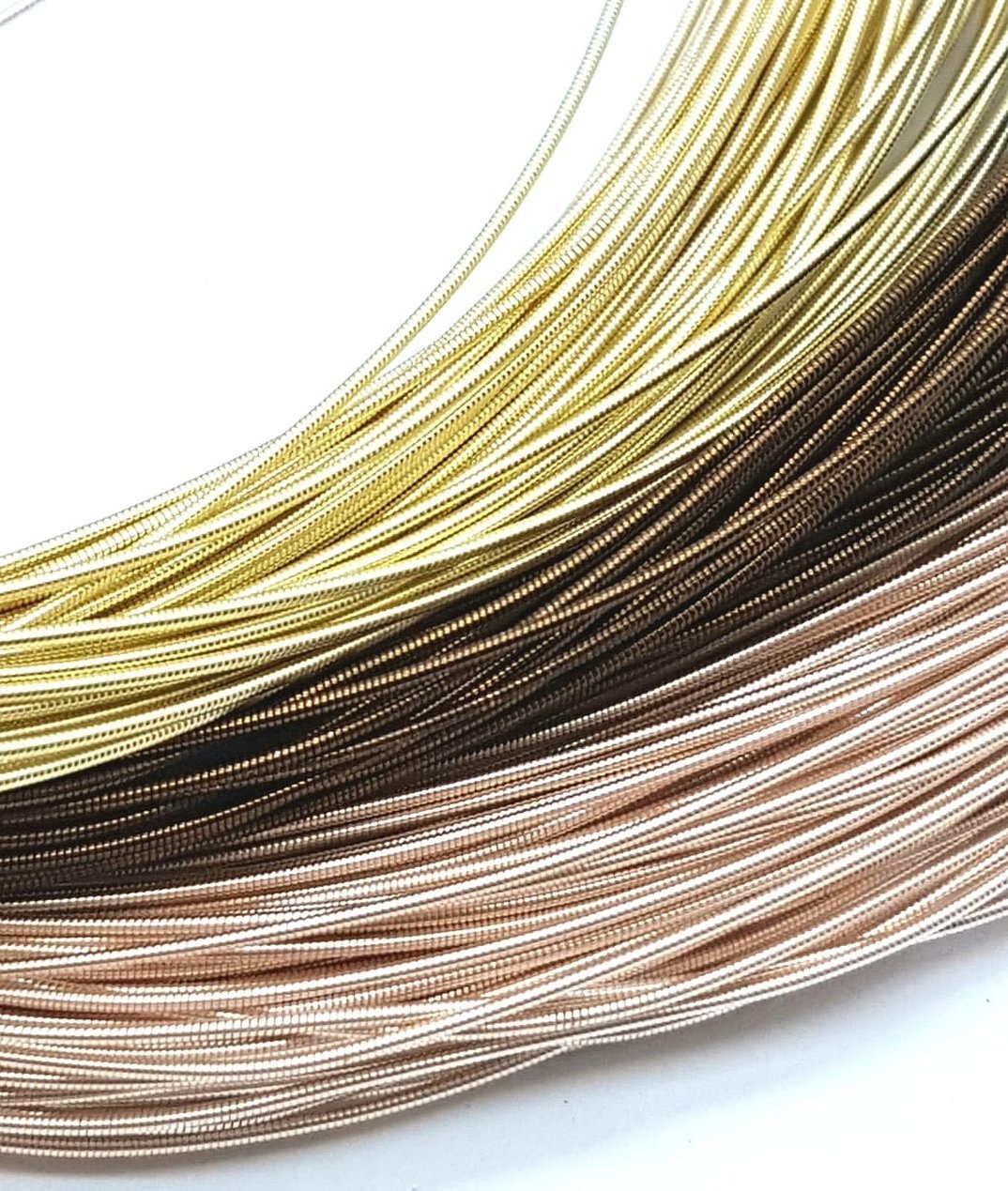
Soft red tape
It is also made from round wire, but of a very thin diameter. The resulting thread is delicate and requires care, as it is easy to deform. Due to its decorative qualities, this thread is used for edging rhinestones, pearls, stones. It is used to fill the surfaces of patterns or make finishing seams.
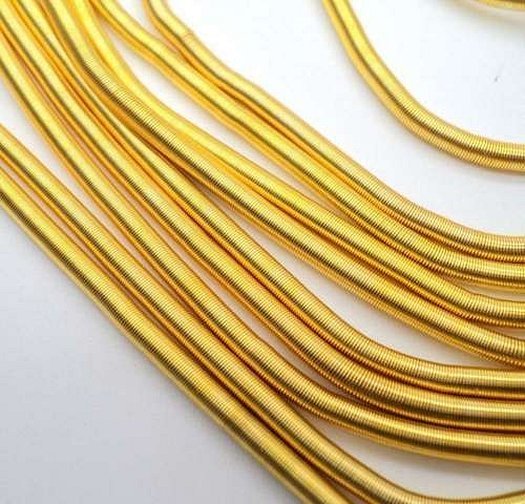
Smooth rigmarole
It has a smooth shiny surface due to the flat cross-section of the wire. It has sufficient density and does not deform when sewing.
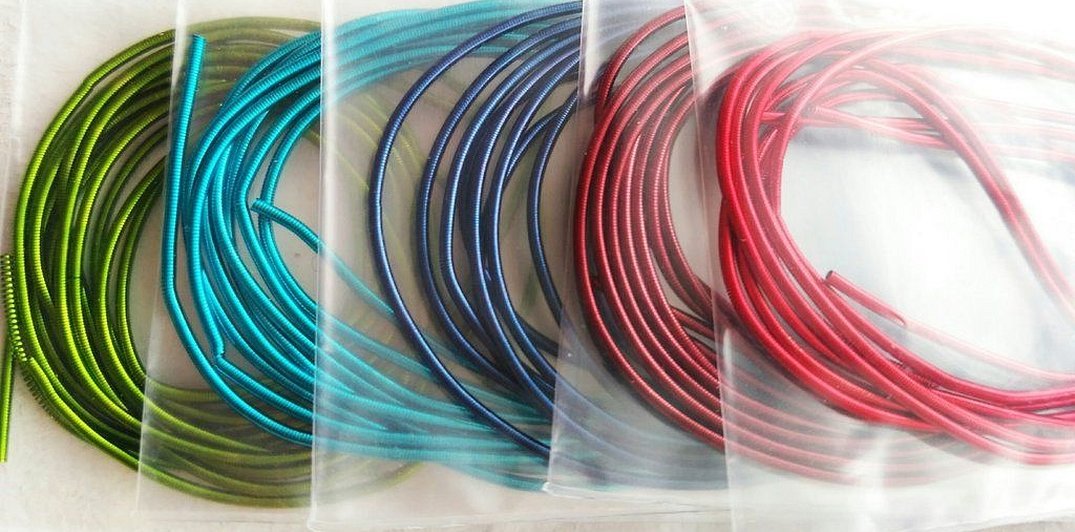
Figured gimp
It is presented in a wide variety of colors, shapes and textures. It can have a shiny or matte wire of round or flat cross-section as a base. Winding on bases of different shapes creates an attractive multifaceted spiral.
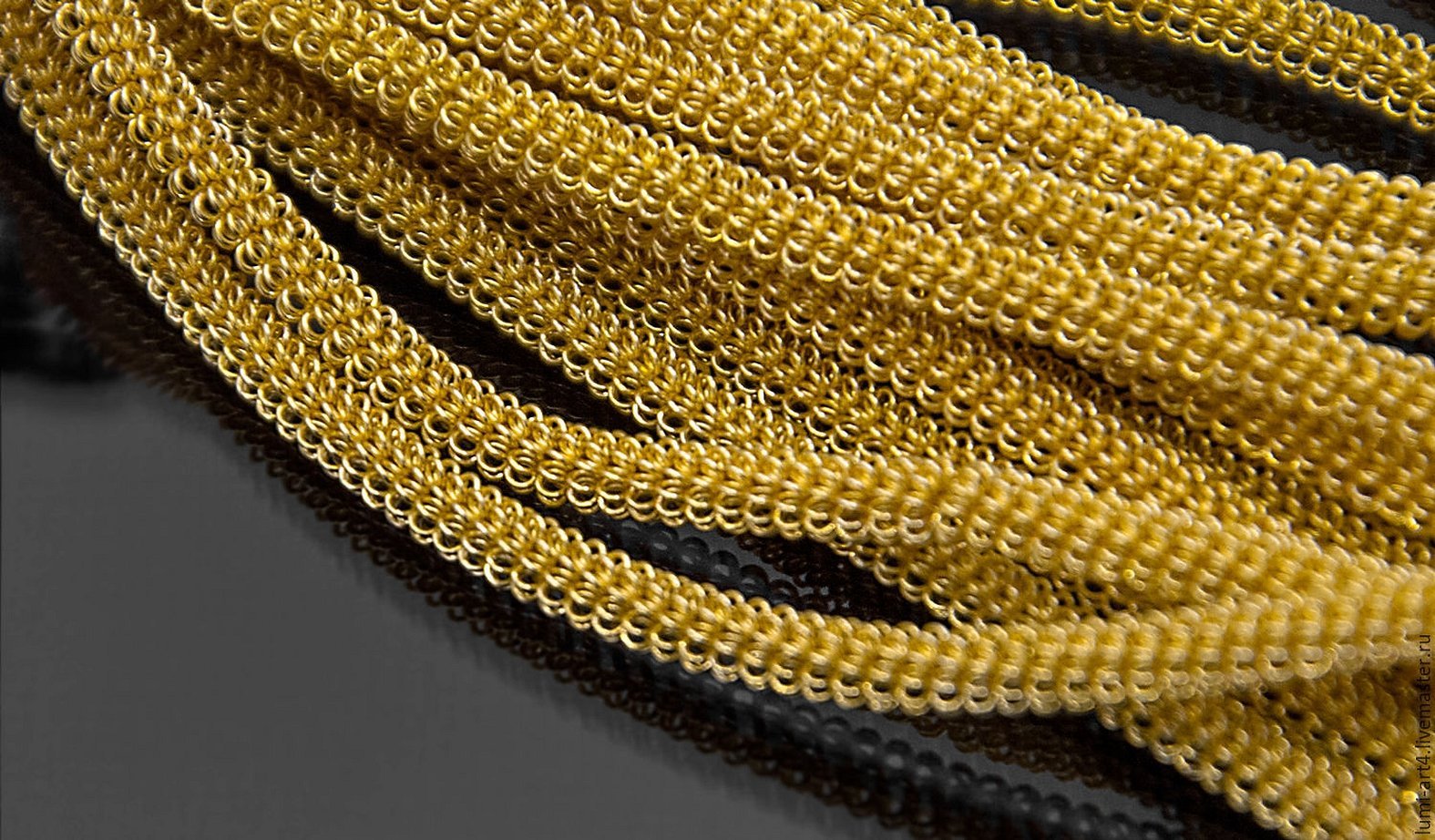
Truncal
A wire made on 5- and 6-angle blanks from flat wire with sharp kinks at the bends is called truntsal. It has shiny edges that reflect light and has high decorative qualities.
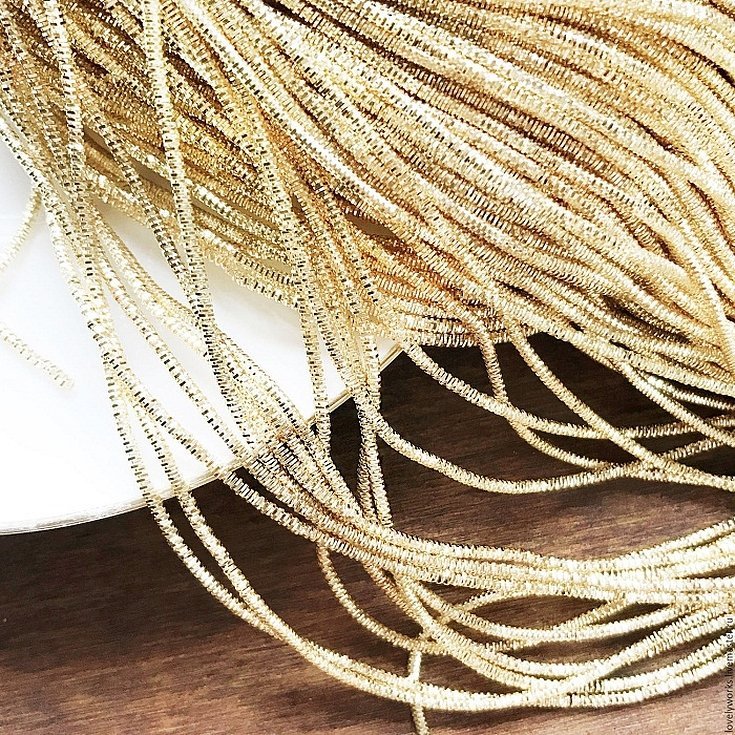
Types of seams and stitches
Metal tubes can be sewn on whole or cut into sections of different lengths. Most often, the wire is sewn on in 3 ways:
- In small pieces. When pieces of a spiral are strung on a needle and sewn on like beads or bugles, laying out a certain pattern. Truncal embroidery, in the form of short elements, is a favorite technique of needlewomen.
- Long pieces of soft thread. The thread that starts the first row is brought out from the wrong side to the right side. Then it is passed through the piece, secured to the fabric on the other side, and the shape of the bend of the element is fixed with several transverse or cross stitches.
- Long sections of stiff gimp. Having sufficient rigidity, this decor does not need additional internal thread. It is slightly stretched and fixed along the entire length with transverse stitches.

Important! Before sewing on long sections, the spiral of the thread is stretched a little so that the fixing stitches pass between the turns and are invisible.
By using pieces of different lengths strung on a thread, various decorative stitches are formed:
- chain stitch and its variations;
- stem suture;
- different types of simple and complex chains.
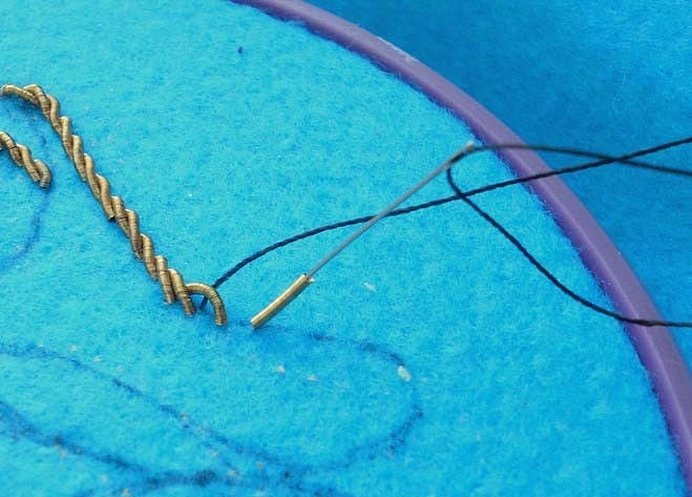
Additional information! The cantilever stitches are completely similar to the usual decorative stitches for embroidery on fabric. The difference is that on the front side, pieces of thin tubes are strung on the thread.
Beginning of embroidery - fixing threads to the fabric
For gold embroidery, the correct choice of auxiliary threads is important. They must be strong and resistant to abrasion. The threads must fill the internal space of the spiral to give the stitches the desired shape and to avoid deformation. Reinforced threads in 2 folds are most often used.
The "vpriklyuchenie" method allows the use of monofilament. This makes the stitches invisible and durable.
To attach the fabric base, use a hoop or an embroidery machine with a frame.
Craftsmen use several techniques for attaching threads to fabric:
- When covering the surface of the pattern, a piece of wire is fixed at the beginning of the pattern with short transverse stitches of the working thread. At the same time, the springs have an allowance along the edges in order to hide them on the wrong side later. The ends of the stiff wire are not removed to the wrong side, but are fixed with several stitches on the front side.
- When creating embroidery using short fragments, only the working thread is fixed with several stitches in one place and then brought out onto the drawing from the back side. Then the short elements are picked up on a needle and sewn onto the fabric with simple stitches. How to sew smooth wire into a brooches is shown in the following picture.
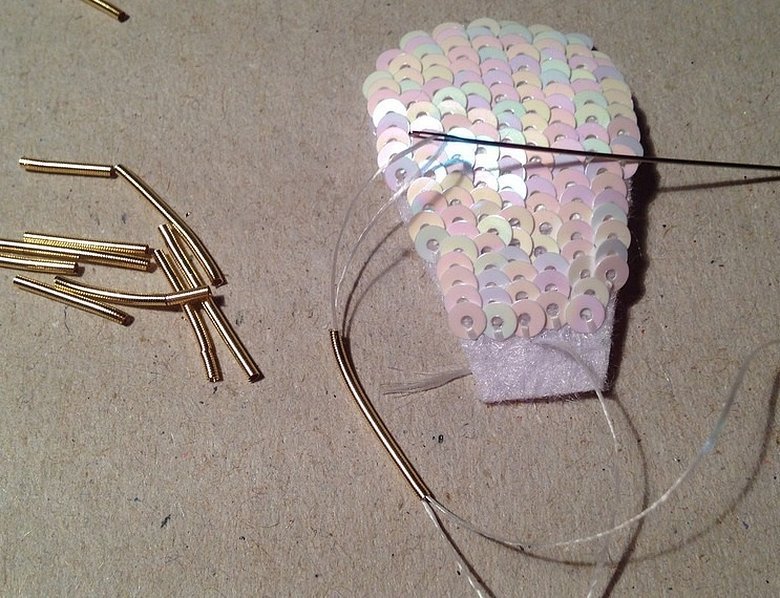
- When forming patterns from longer fragments, in addition to the internal working thread, the transverse attachment method is used, which looks like small transverse stitches that fix the shape of the embroidery element.
Technique of sewing with wire
Using different techniques, you can embroider volumetric and smooth patterns. To create volume, a cord, felt or cardboard of the required size is placed under the embroidery. Such a lining is first fixed to the main fabric with glue or simple stitches with a needle.
Flat smooth fillings do not require preparation and are made according to a transferred design on a fabric base.

You can understand how to embroider with a thread by first mastering the simplest seams on fabric. Having achieved harmonious proportions and elegance of stitches, you can move on to volumetric embroidery.
Beginner needlewomen can buy ready-made embroidery kits, presented in a large assortment.
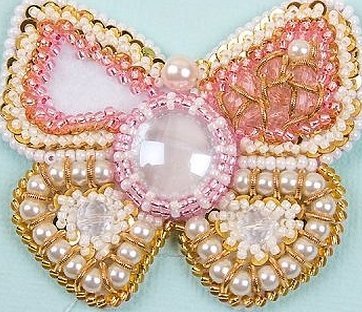
Smooth rigmarole
The smooth surface of the metal tubes creates a shine and is suitable for filling the elements of the design with a solid coating. In contrast to the matte metallic textures and materials, the shine effectively accentuates the details.
To fill the space, cut pieces of the required length. If identical pieces are needed, cut several pieces at once. If the width of the pattern changes, it is better to try on and cut each element separately.

How to sew on stiff wire
The master class on creating a brooch clearly shows the sequence of actions when embroidering with wire.
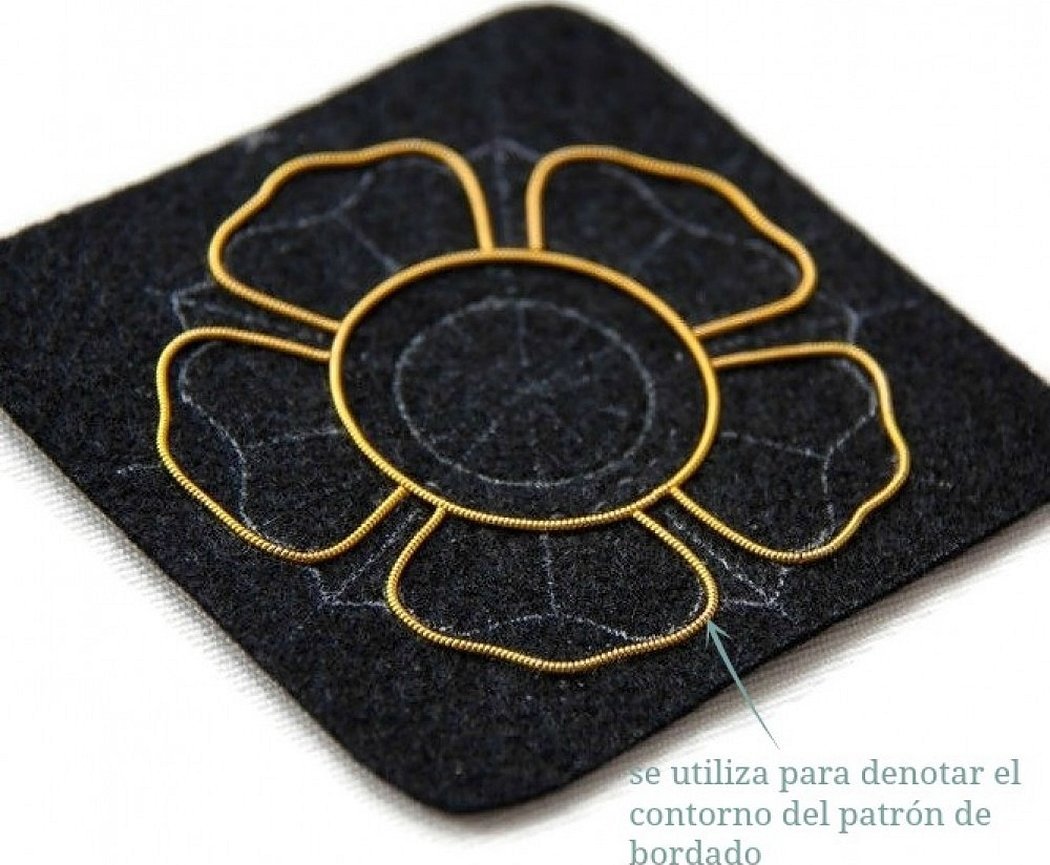
How to sew on wire along the contour:
- The spring is stretched evenly so that the working thread passes freely between the turns.
- The end of the thread is fixed to the outline of the design with a monofilament.
- Then, laying a wire spiral along the outline of the design, fix it with very short longitudinal stitches every 3 mm.
- Once the outline is complete, the thread is cut off and its end is secured with several stitches of monofilament.
A type of hard thread is truntsal. Truntsal, as a material with a special decorative quality, can be used to embroider both whole individual elements and to use it as bright accents in the form of long or short threads.
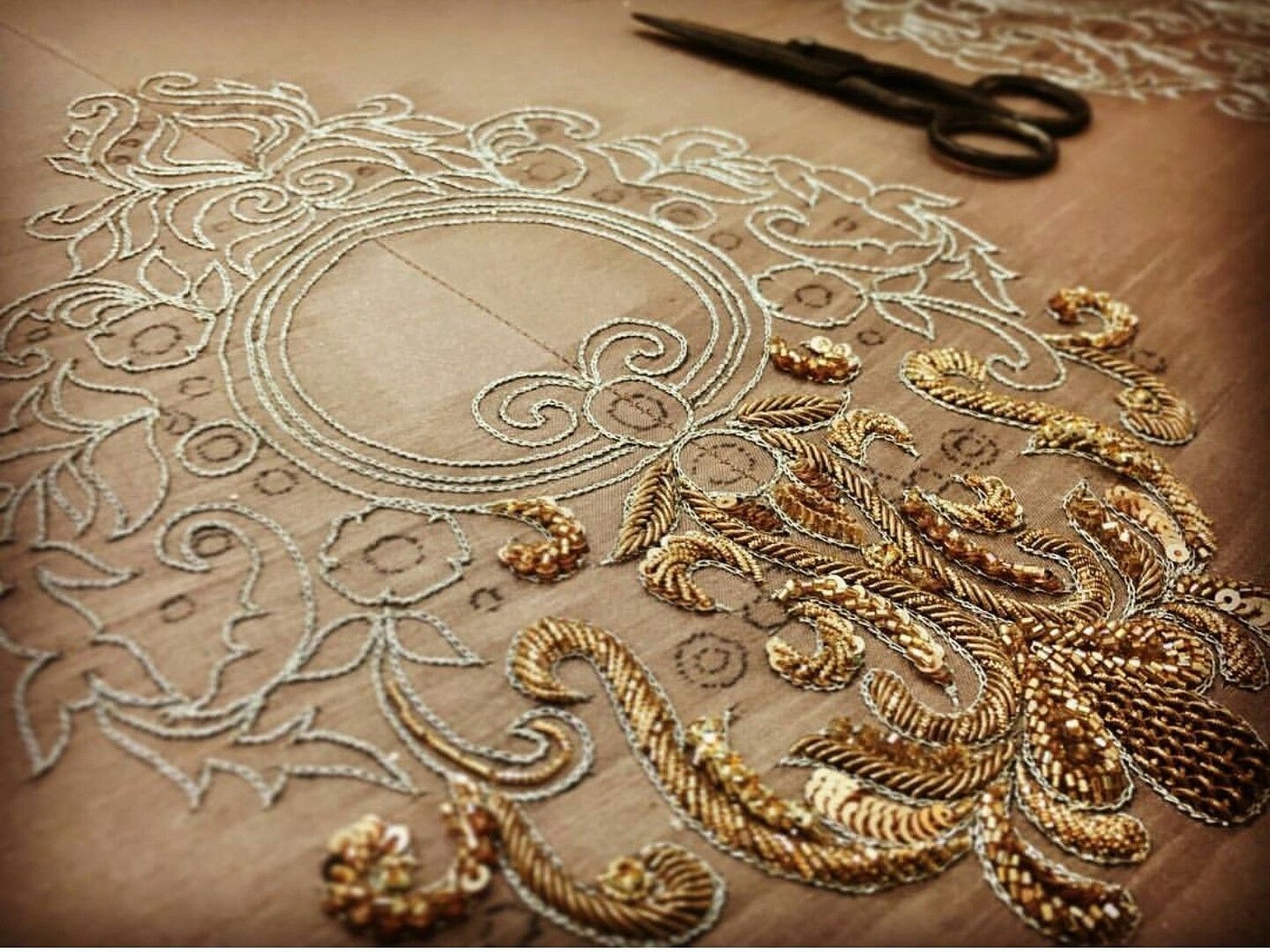
Modern gold embroidery is gaining popularity every day and is used both by decorative artists to create works of art and by leading fashion designers who bring the luxury of gold into world fashion trends.




